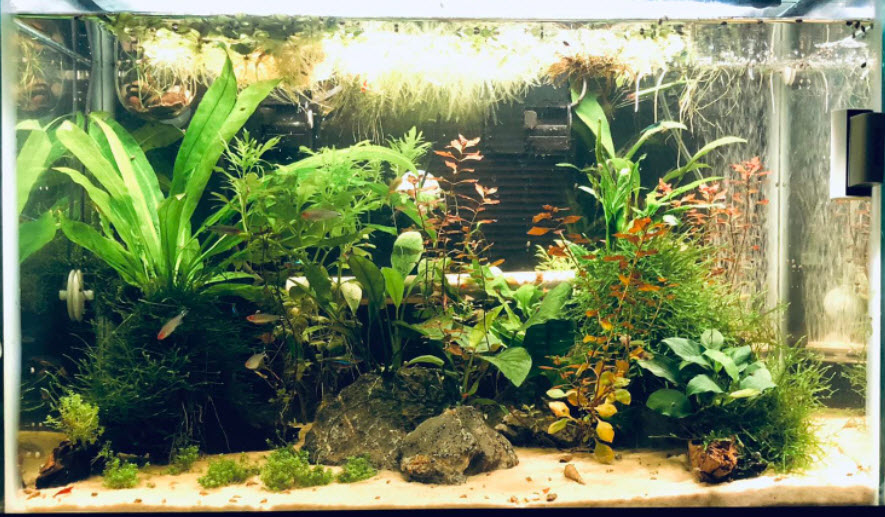
Probably three-fourths of the planted aquariums are low-tech planted tanks. The genesis of most low-tech planted aquariums is simple. It is a beginner tank that got some beginner plants put into it and the whole thing worked, more by accident than by design.
A beginner sets up their first aquarium. They put down some aquarium gravel or sand and stick some plants in. They use the LED light that came with the kit they bought. They add a few small fish. They add an airstone and air pump. Some of the plants are terrestrial plants and die. Some of the plants die back, then come back. And some of the plants take off running. And in a year or so they have what I would term a “low-tech” planted aquarium. No CO2, no fertilizer, no fancy lighting, and it all works. This just points out how flexible and forgiving Mother Nature is.
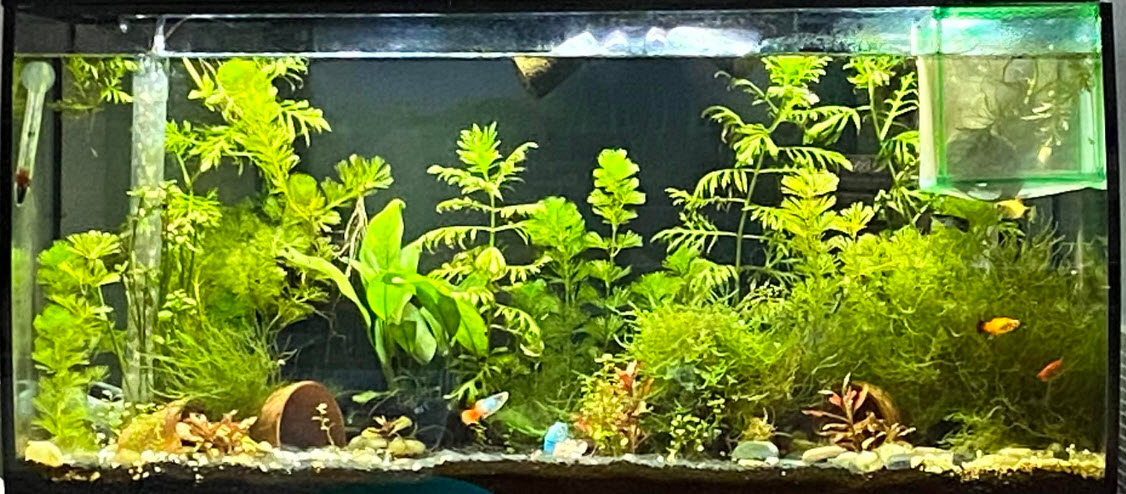
The only “rule” that I’ve seen for this type of tank is to:
.
ONLY have a FEW SMALL Fish
.
Another common characteristic of low-tech planted aquariums is that they either have no aeration at all or they have one very weak air stone operating in a larger tank. One reader had a low-tech tank full of Java fern and Java moss. He added an air stone and immediately the Java moss started dying back. If he had gone longer, his Java fern would have started dying back also. He removed the air stone and the Java moss began growing again.

The TYPICAL characteristics of this type of planted aquarium are in this list:
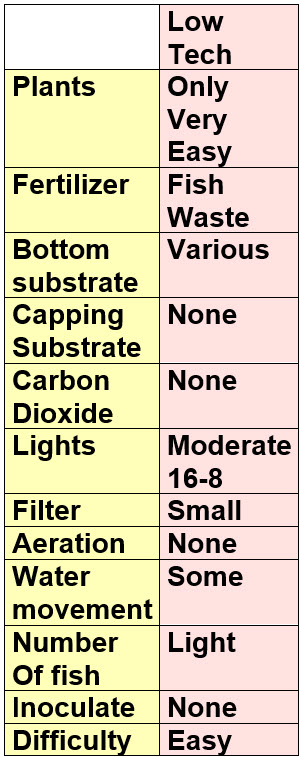
The lighting here is moderate in intensity (5 “true” LED watts per ten gallons), 16 hours on and 8 hours off. Note this is ONLY a TYPICAL set up. None of these parameters are cast in stone. They can all be changed with success.
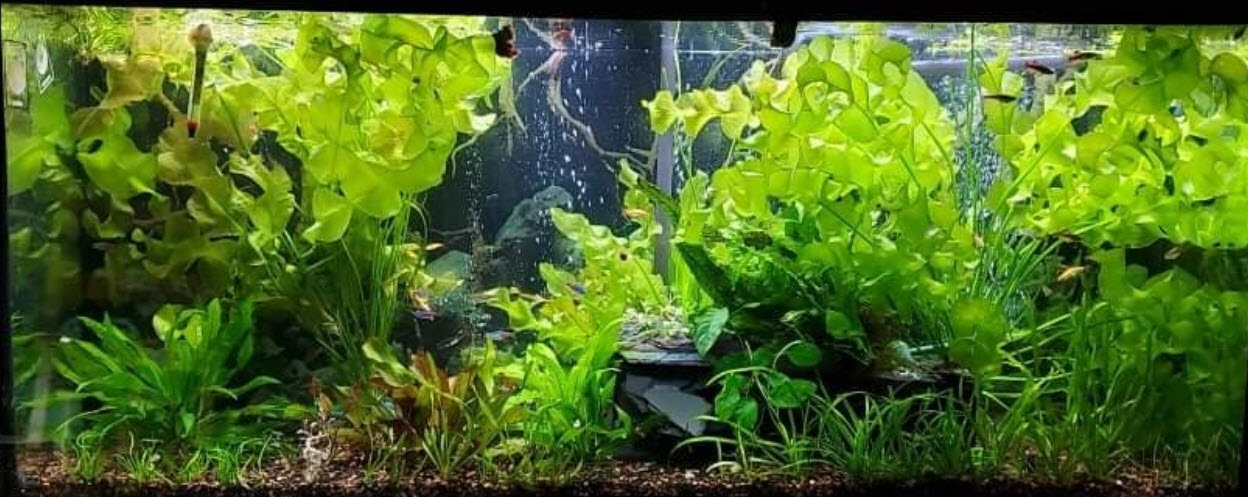
The key here is the plants. Some plants just cannot be killed, even by rank amateurs. These plants include Anubias (just don’t put the rhizomes INTO the substrate), Amazon Sword (Echinodorus amazonicus), Java Fern (Leptochilus pteropus, synonym Microsorum pteropus), and Java Moss (Taxiphyllum barbieri). Java fern and Java moss are both “epiphytes” and need to be either attached to a surface like a piece of wood or they need a very open substrate like aquarium gravel. If you bury the crown on Java fern in sand it will die.
Here are some plants which are “easy”:
- Undemanding, rooted
- *Amazon Swordplant (Echinodorus bleheri and Echinodorus amazonicus)(dies back initially)
- *Java fern (Leptochilus pteropus, synonym Microsorum pteropus)(like the open substrate or epiphytic)
- *Anubias barberi forms (likes rhizomes to be above the substrate or in an open substrate, very slow)
- Cryptocoryne (many forms, dies back when planted, then comes back)
- Bucephalandra (“Buce”, many very attractive brown forms, slow)
- Cabomba (can be a floater or rooted)
- Bacopa caroliniana (needs lots of light or becomes “leggy”)
- Rotala rotundifolia (needs lots of light or becomes “leggy”)
- Vallisneria (many varieties)
- Undemanding Carpet Plants, rooted
- Pygmy Chain Sword (Echinodorus tenellus)
- Pearlweed (Hemianthus glomeratus)
- Dwarf Baby Tears (Hemianthus callitrichoides)
- Undemanding epiphytes which like to be attached to rocks and wood
- *Java moss (Taxiphyllum barieri)
- Susswassertang (“round-leaf Pellia“), a slow grower, expensive but worth it, needs to be attached.
*VERY VERY easy
Note the speed with which most of these plants grow is dependent largely on the amount of CO2 in the aquarium. In a low-tech setup with no CO2 and no soil (adds CO2) most of these plants will grow very slowly.
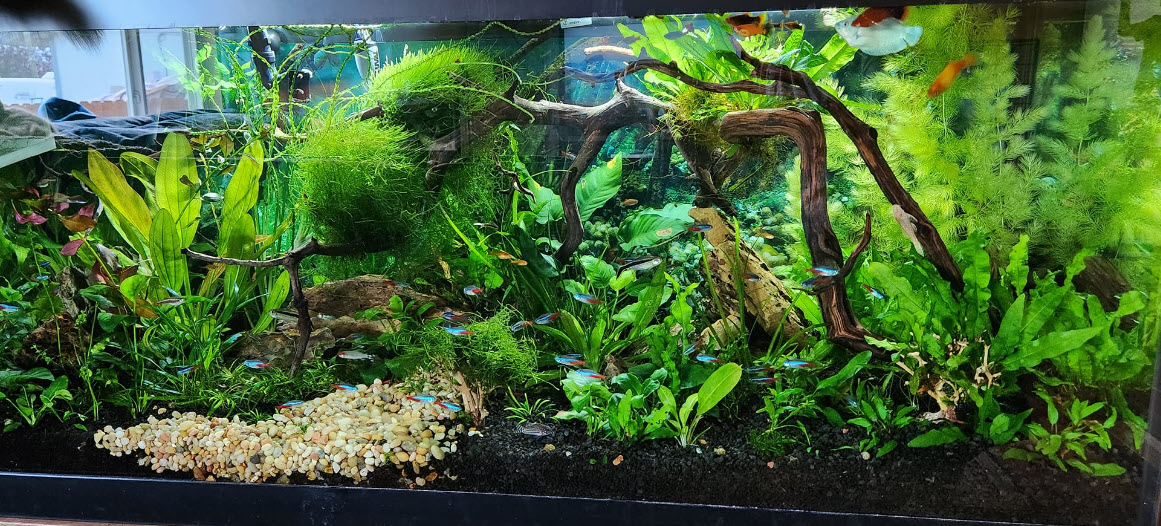
Then there are floating plants. I do not like the look of floating plants and I do not use them in my decorative aquariums. But many love them. Here are some floating plants that are easy:
- Fast-growing plants which typically float in the upper layers of an aquarium
- Elodea (Anacharis), Egeria, and Hydrilla are very similar appearing floating plants
- Riccia sp.
- Milfoil (Myriophyllum sp.)(note this plant smells bad!)
- Water Sprite (Ceratopteris thalictroides, can be emergent)
- Water Wisteria (Hygrophila difformis, very similar to water sprite)
- Hornwort (Ceratophyllum demersum)
- Undemanding emergent plants (“floaters”, they float on the surface of the aquarium water with the leaves exposed to the air)
- Water Lettuce (Pistia stratiotes)
- Duckweed (grows so fast some consider it a noxious weed)
- Salvinia
- Azolla
- Amazon Frogbit (Limnobium laevigatum)
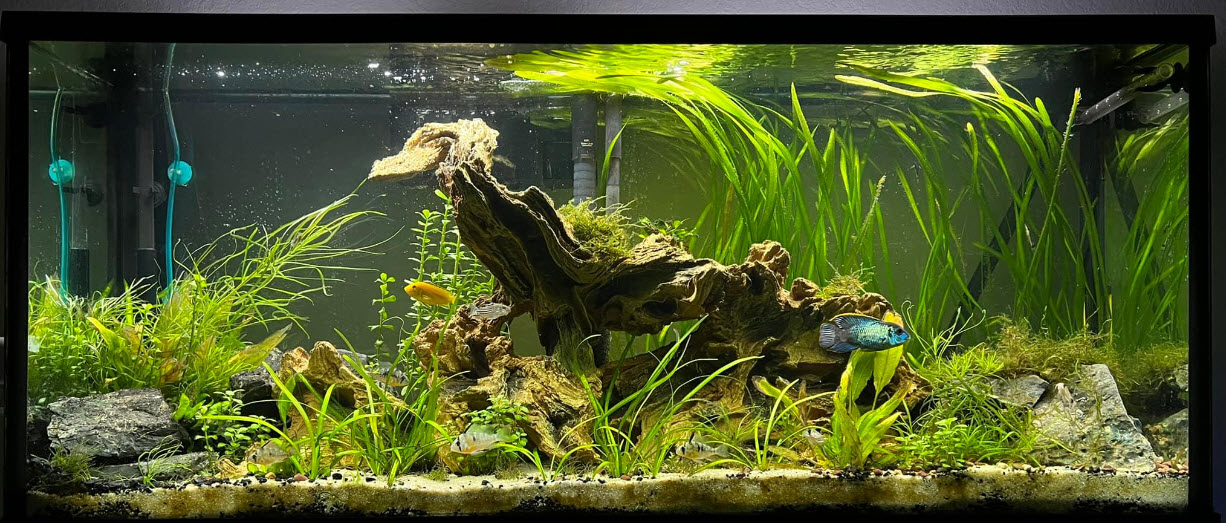
Filtration
There are a whole series of small DIY filter designs that will work very well with this type aquarium (low flow deep in the tank) and can be seen at the following article:
8.7.8. Small DIY Filters
.
Return to Planted Tank Menu
.
Aquarium Science Website
The chapters shown below or on the right side in maroon lead to close to 400 articles on all aspects of keeping a freshwater aquarium. These articles have NO links to profit-making sites and are thus unbiased in their recommendations, unlike all the for-profit sites you will find with Google. Bookmark and browse!
.

Caleb Pitts says
I came across this on google looking at “low tech aquascapes” on google images. The 6th image looked familiar. I then realized that was my old 55 gallon tank. If possible could I get credit for the image and tank? (Caleb Pitts). Also if you email me, I can give you another image of the tank right before I broke it down. It grew in a lot more and I can give more information about the set up as well.